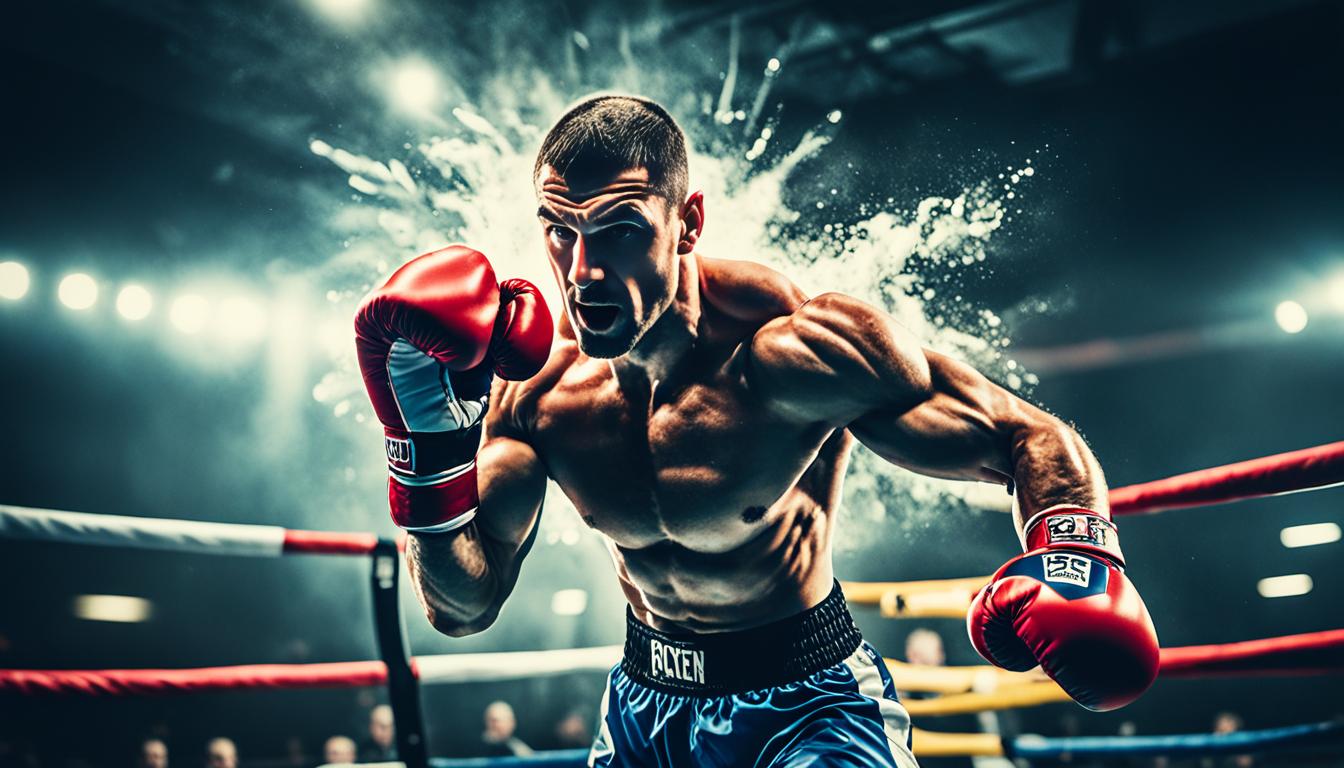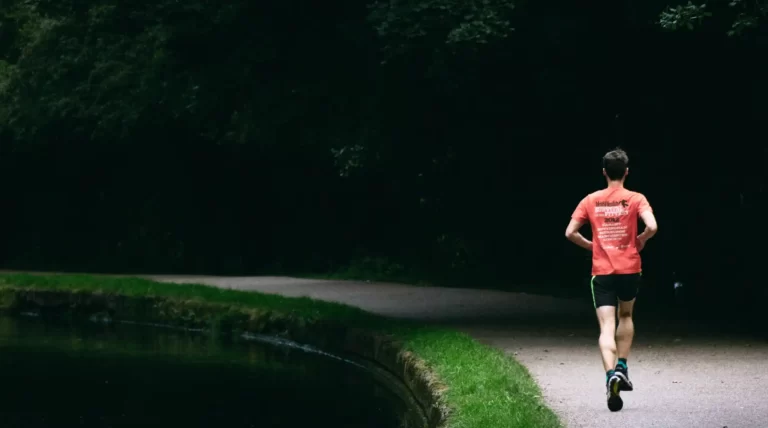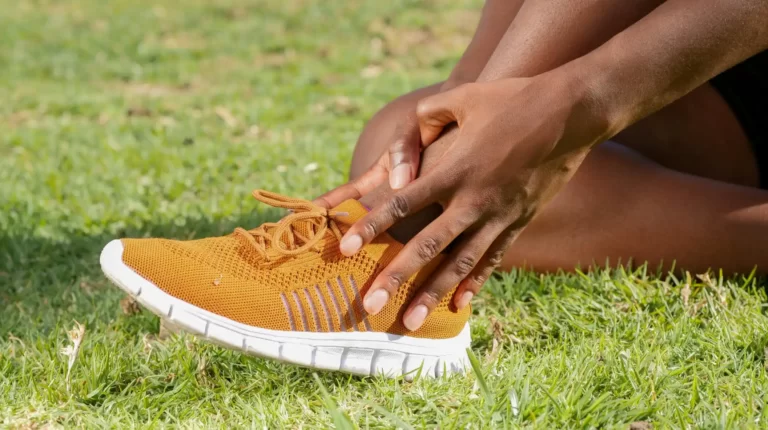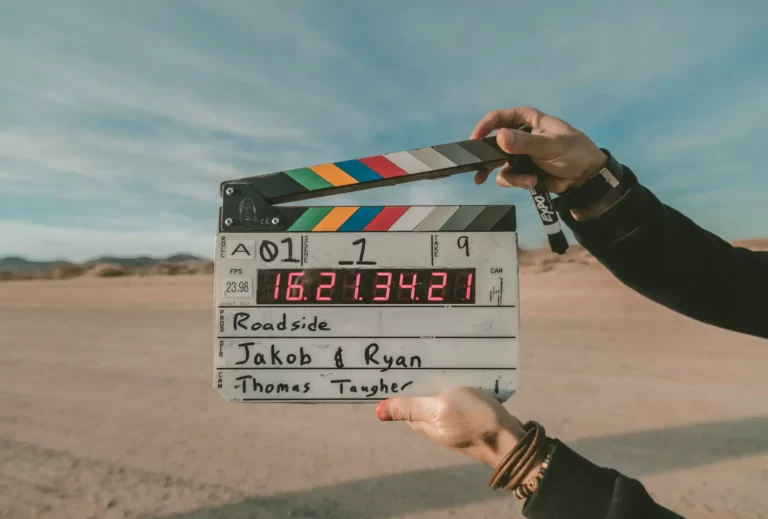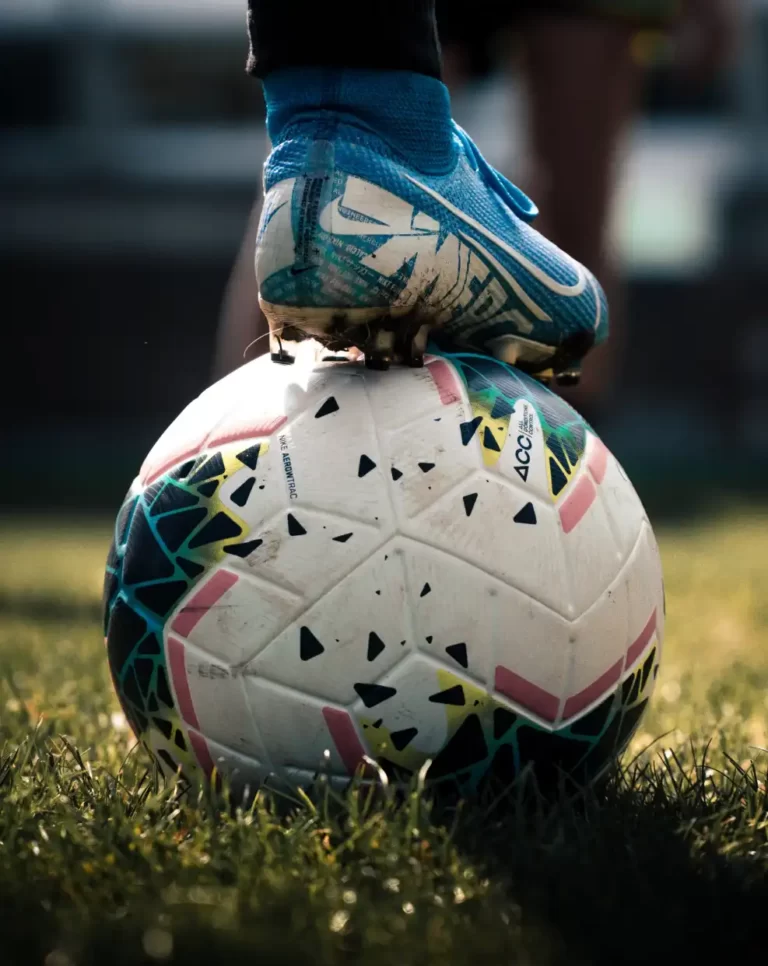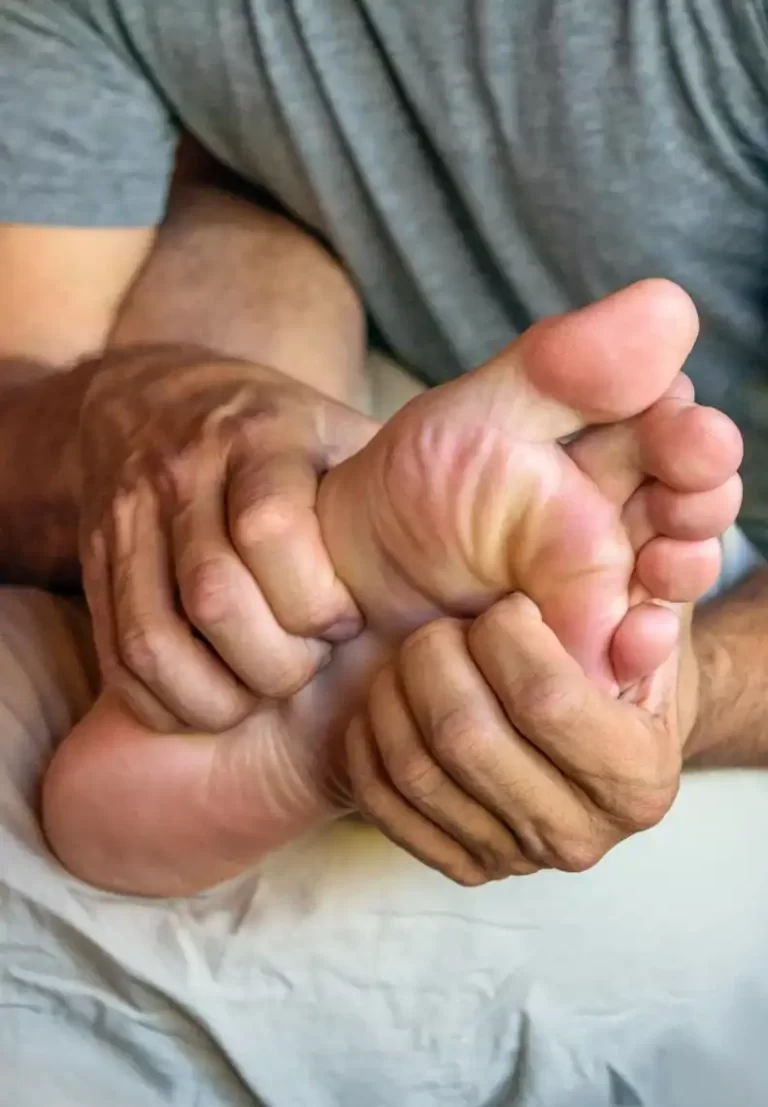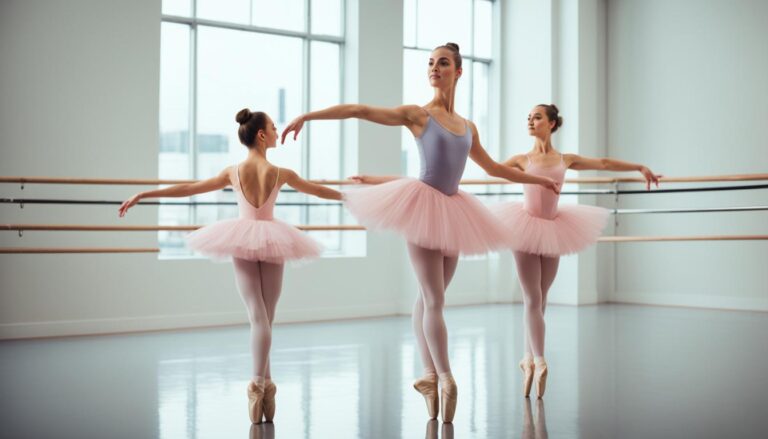Best Boxers with Flat Feet for Better Performance
Some of the greatest boxers ever shared an unexpected trait – flat feet. It might surprise you. Many top boxers used their flat feet to beat their rivals. This goes against what most people think about flat feet in sports.
Boxing is a sport where an athlete’s body matters a lot. But having flat feet is often seen as bad. Yet, many champs with flat feet have turned this into a plus. In this guide, we’ll look at how being a flat-footed boxer can be an advantage. We’ll cover the best ways to train and the tactics used by famous boxers with flat feet. Plus, we’ll share tips for you to boost your own boxing if you have flat feet.
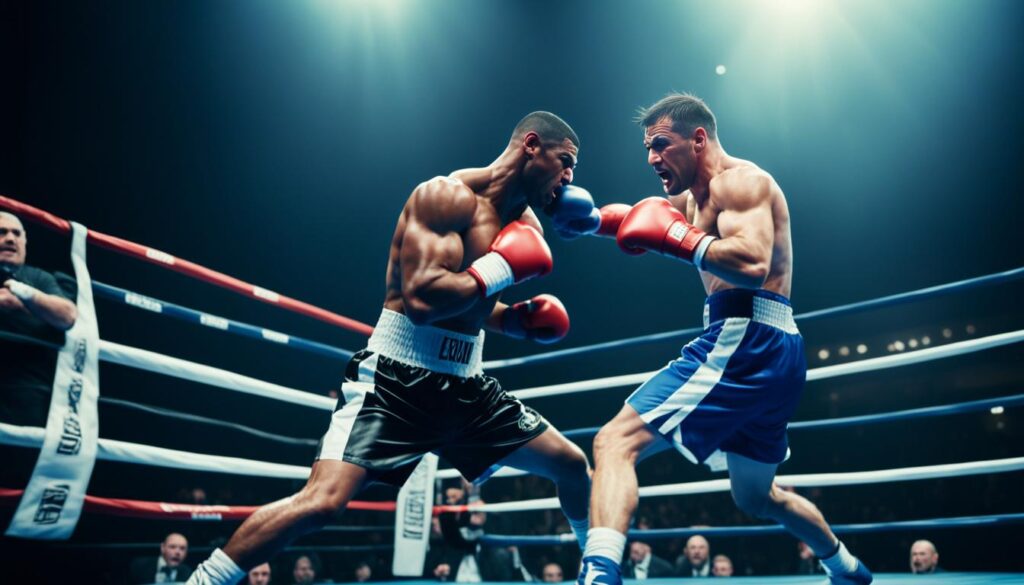
Key Takeaways
- Many legendary boxers have achieved success despite having flat feet, disproving the myth that flat feet are a hindrance in combat sports.
- Flat-footed boxers can leverage unique biomechanical advantages, such as improved balance and stability, to excel in the ring.
- Adapting training techniques and footwork patterns can help flat-footed boxers optimize their performance and overcome perceived limitations.
- Selecting the right boxing shoes and incorporating targeted exercises can enhance the support and power generation capabilities of flat-footed boxers.
- Embracing a positive mindset and developing mental toughness are crucial for flat-footed boxers to thrive in the sport.
Introduction: Embracing Flat Feet in the Boxing World
Many believe that flat feet are bad for sports, especially boxing. But, in truth, some great boxers have flat feet. They use their special traits to help them win.
Understanding the Myth: Flat Feet and Athletic Performance
The idea that flat feet make you worse at sports has stuck around. However, looking at the science and what top athletes say, we see a different story. People with flat feet have unique features. These can actually be good for boxing.
Exploring the Advantages of Flat Feet for Boxers
Let’s rethink flat feet in boxing. They are not a disadvantage. In fact, flat-footed boxers have some cool perks. They are often better balanced, can hit harder, and move more efficiently. We’ll look closer at these benefits next.
Boxing Legends with Flat Feet
In boxing history, some fighters have proven wrong the idea that flat feet slow you down. These flat-footed boxers showed how they turned their challenge into their strength in the ring.
Muhammad Ali is one of these pioneers. Even though he had flat feet, he moved gracefully. He used his unique footwork to outmaneuver his opponents and land powerful punches.
Joe Frazier, a legendary boxer, fought from a strong, low position. His low, planted stance let him push off his back foot with force. This made his short-range punches deadly.
George Foreman is another example. He used his stable, low base to hit hard. Evander Holyfield, with his balanced footwork, mixed powerful hits with smart defense.
These flat-footed boxers broke the stereotype that flat feet limit you. They showed that with the right approach, flat feet can even be an advantage in boxing.
Boxers with Flat Feet
In boxing, athletes with flat feet challenge the idea that high arches are best. Many legendary boxers with flat feet have succeeded. They did this by understanding how to use their unique feet in training and fights.
Recognizing the Unique Biomechanics of Flat Feet
Flat-footed boxers have unique traits. Their feet’s larger contact area offers better balance and stability. Without high arches, weight and force distribute more evenly, helpful for powerful moves.
Yet, they face challenges like shock absorption and feet rolling inward. Overcoming these issues means knowing how to make specialized training and technique changes.
Adapting Training and Techniques for Optimal Performance
For flat-footed boxers to excel, they must tailor their training. This includes exercises that boost foot muscles and ankle strength. It helps them stay balanced and in control.
They also need to adjust footwork, weight distribution, and how they pivot. Understanding and applying these changes in training lets flat-footed boxers reach their peak.
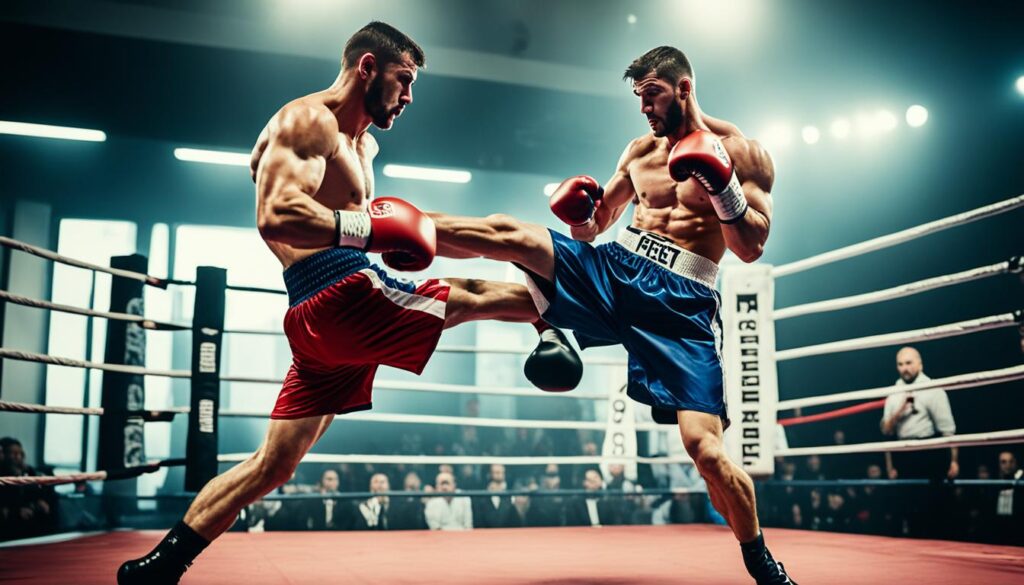
The Back Foot: A Crucial Element for Flat-Footed Boxers
For flat-footed boxers, the back foot is key. It helps them stay balanced, stable, and powerful. They need to focus on how they position their back foot, distribute weight, and move it to boost their performance in the ring.
Maintaining Balance and Stability
Flat feet mean a different way to move and use weight. It’s crucial for boxers with flat feet to keep their back foot steady on the ground. They should spread their weight across their whole back foot. This keeps them stable when they need to make quick or sudden moves in boxing.
Generating Power and Pivoting Efficiently
The back foot important for generating power and pivoting well. By turning and shifting their weight on the back foot, flat-footed boxers can hit with a lot of impact. They can also move quickly around their opponent. Knowing how to pivot the back foot helps them punch hard and shift quickly in the ring.
Footwork Drills for Flat-Footed Boxers
For boxers with flat feet, working on their footwork is key. We’ve put together many drills and tasks to boost their movements in the ring. This includes exercises to improve how they step, their footwork style, and how they position their weight.
Improving Agility and Footwork Patterns
Being agile is crucial for these boxers. It helps them to act fast, switch directions, and keep up with their opponents precisely. A great drill for agility is the ladder drill. It involves stepping fast through squares on the ground. This teaches them to stay on their toes and place their feet just right. They start slow but as they get better, we make it more challenging by making it faster and more complex. We also suggest working on key movement patterns like shuffling, side-stepping, and turning. These are key for flat-footed boxers to perform well and defend themselves in the ring.
Developing Proper Foot Placement and Weight Distribution
Getting foot placement and weight right is crucial for flat-footed boxers. This helps them hit harder, stay stable, and turn quickly. A useful drill for this is the forward-and-back drill. Here, they step forward and then backward with each foot. The focus is on where they put their weight. They learn to plant their back foot firmly and point their front foot a bit inward. By doing this drill often, they get a good grasp of how to place their feet and distribute their weight. This leads to stronger punches, better pivots, and improved defense.
These drills are specifically built for boxers with flat feet. They aim to make theiragility, footwork style, and overall step and weight control
better. By making these drills a regular part of their practice, these boxers can really hone theirtechniques, balance, and how well they move
in the boxing arena.
Defensive Maneuvers and Ring Movements
In boxing, smart defensive moves and footwork are key to winning. For those who are flat-footed, how they use their feet is important. It’s tied to how they move in the ring and defend themselves.
Effective Footwork for Defensive Tactics
Flat-footed boxers use their weight distribution to their advantage. They stay stable and perform defensive moves well by placing their feet right. This lets them dodge, counter, and control the ring better.
It’s crucial for these boxers to focus on their back foot. They pivot at the hips a bit, keeping their back foot steady. This helps them stay balanced, change directions fast, and counterattack effectively.
They also benefit from their firm base and low center of gravity. This setup allows them to stay strong while moving defensively. It gives them the ability to react quickly and precisely against their opponents’ moves.

Selecting the Right Boxing Shoes
Choosing the right boxing shoes is key for flat-footed boxers. We’ll share what to look for in shoes made for flat-footed athletes. We’ll also give tips on how to tweak boxing shoes for better support and stability in the ring.
Features to Look for in Boxing Shoes for Flat Feet
For flat-footed boxers, certain shoe features are a must. These include a wider base to spread weight evenly. Also, find shoes with a thick layer of cushioning in the midsole and heel. This helps reduce stress on the feet.
Opt for shoes with a flexible yet stable sole. This will improve your foot’s movement and pivoting during boxing moves.
Customizing and Modifying Shoes for Better Support
Sometimes, regular boxing shoes just don’t fit perfectly for flat-footed boxers. In these situations, think about customizing your shoes. You can do this by adding arch support, heel cushions, or special orthotics.
It’s a good idea to talk to a footwear expert or a podiatrist for advice. They can help you pick the best ways to adjust your shoes for a better match and support.
Training and Conditioning for Flat-Footed Boxers
Crafting a specialized training for flat-footed boxers is key to boosting their performance. These athletes have unique body mechanics. It’s vital to use exercises and methods that meet their particular ring challenges and skills.
Strengthening the Feet and Lower Body Muscles
For flat-footed boxers, a key area is strengthening the feet and lower body muscles. Doing this helps with stability, power, and snappy moves needed in flat-footed boxing. They should do calf raises and ankle circles. Also, focusing on balance can boost foot and ankle strength.
Other important exercises include squats, lunges, and deadlifts. These work on making hips, glutes, and thigh muscles strong. This strength is vital for power and staying balanced and controlled while boxing flat-footed.
Incorporating Balance and Stability Exercises
Besides getting stronger, flat-footed boxers need to refine their balance and stability. This improves their footwork, agility, and defense. They can do drills on one leg, use a bosu ball, and add plyometrics into their routine. This enhances their sense of positioning, keeps their joints stable, and improves their overall control.
These balance and stability exercises help flat-footed boxers gain coordination, body awareness, and fast reactions. This lets them move around the ring well, handle defensive moves, and keep their balance in intense moments.
A full training program designed for flat-footed boxers allows them to reach their peak. It enhances their performance, range, and effectiveness in the ring.
Mindset and Mental Preparation
Boxing isn’t just about being strong or quick. Your mental game is key, especially for flat-footed
boxers. Accepting yourflat feet
as an advantage is crucial. Building confidence and strong mental skills is necessary to do well in the ring as aflat-footed boxer
Embracing Your Flat Feet as an Advantage
To thrive, flat-footed boxers must see their unique traits as a plus, not a minus. Recognize the benefits flat feet offer, like better balance and stability in the ring. This view will help you perform at your best. Embrace your flat feet for added confidence and inspiration.
Developing Confidence and Mental Toughness
Being confident and mentally tough is a must for boxing. It’s about staying focused, using visualizing, and positive self-talk
to beat challenges and setbacks in the gym and sparring. Practicing these skills will help you deal with pressure and shine in the ring.
Always remember, your flat feet are an advantage with the right mindset
Conclusion
In conclusion, thinking flat feet are bad for boxing is wrong. Many top boxers, like Muhammad Ali, had flat feet. They used their feet to their advantage in the ring. With the right skills and mindset, anyone with flat feet can do well in boxing.
This guide helps flat-footed boxers improve their game. It talks about the benefits of flat feet and how important the back foot is. It also covers footwork and defense. We’ve given you what you need to succeed as a boxer with flat feet.
Keep going in boxing and remember that your flat feet make you unique. Use what we’ve taught you to get better at boxing. Stay positive and work hard. With this knowledge and effort, you can go far in boxing and be like great boxers with flat feet who came before you.
FAQ
What are the unique advantages of being a flat-footed boxer?
Many think having flat feet is a disadvantage for boxers. Yet, it can be beneficial. Flat-footed boxers tend to have a lower center of gravity. This gives them better balance and stability. They also use their back foot well to generate power. These traits amp up their defense, footwork, and overall ring performance.
How can flat-footed boxers adapt their training and techniques to maximize their potential?
To maximize their boxing potential, flat-footed boxers should focus on special techniques. It’s key to watch how you position your back foot. Also, distribute your weight right and use the proper pivoting moves. Different drills and exercises can improve your balance and stability. Modifying boxing shoes for flat feet also helps boost performance.
What are some key defensive maneuvers and ring movements that flat-footed boxers can utilize?
Flat-footed boxers have an advantage with a low center of gravity. This makes them strong in defensive moves and ring control. They perform well in tactics like moving sideways, pivoting, and shuffling to defend. They can evade and counter their opponent’s moves effectively. This strategy helps them stay in charge of the fight.
How can flat-footed boxers develop the necessary mental toughness and confidence to thrive in the sport?
Seeing their flat feet as a plus is vital for flat-footed boxers. They should aim for a positive attitude, strong mental grit, and deep confidence in their skills. By focusing on their strengths and always aiming to get better, they can surpass any boundaries. This approach allows them to achieve great success in the ring.
What are some key considerations when selecting the right boxing shoes for flat-footed boxers?
The right boxing shoes matter a lot for flat-footed boxers. Choose shoes with good arch support and a stable heel. The sole should be flexible yet tough. Think about customizing the shoes to fit your flat feet better. Doing this can make you more comfortable, stable, and enhance your ring performance.

